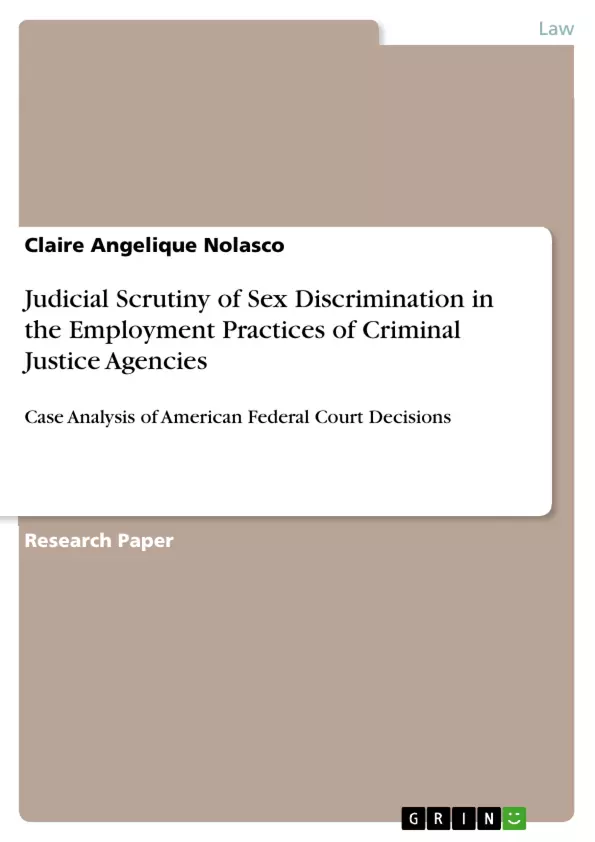Social science research is replete with studies examining the impact of gender in the workplace. Some analysts focus on the extent to which capital resources and other extraneous factors influence gender-based hiring and promotion practices (Petersen, Saporta & Seidel, 2000; Kay & Hagan, 1998; Kalleberg & Reskin, 1995). Others focus on the organizational structures that perpetuate and reinforce stereotypes in job allocation (Gorman, 2005; Ridgeway, 1997). On the other hand, other studies refute the notion that sex has any significant impact in the hiring process and hiring decisions of management, particularly, in call centers and retail banks (Petersen, Saporta, & Siedel, 2005; Fernandez, Castillo, & Moore, 2000; Fernandez & Weinberg, 1997). There is lack of research, however, on the legal interpretation accorded by courts to the term sex discrimination and the circumstances under which sex discrimination in the workplace may be deemed to exist. Also, there is scant analysis of the legal procedures needed to establish the existence or non-existence of sex discrimination in the criminal justice system. The focus of most social science research has been on the development of theories of why sex discrimination exists.
Inhaltsverzeichnis (Table of Contents)
- Judicial Standard for Gender Based Discrimination
- Intermediate Scrutiny Test
- Strict Scrutiny Test
- Rational Basis Test
- Disparate Treatment Theory
- Disparate Impact Theory
Zielsetzung und Themenschwerpunkte (Objectives and Key Themes)
This text aims to analyze the legal interpretation of sex discrimination in the workplace, particularly within the criminal justice system. It examines the application of Title VII of the Civil Rights Act of 1964 in addressing gender-based discrimination within these agencies and explores the role of federal courts in promoting diversity.
- Judicial scrutiny of sex discrimination in the employment practices of criminal justice agencies
- The influence of gender stereotypes in the workplace
- The role of Title VII of the Civil Rights Act of 1964 in promoting gender equality in criminal justice agencies
- The legal standards for proving sex discrimination in employment cases
- The impact of federal court decisions on employment practices in the criminal justice system
Zusammenfassung der Kapitel (Chapter Summaries)
The text begins by exploring the prevalent research on gender discrimination in the workplace. It examines how various theories, such as cultural schemas and gender role categorization, explain the persistence of gender stereotypes in employment practices. The text then delves into the historical context of the Civil Rights Act of 1964, analyzing its impact on the criminal justice workforce and highlighting the ongoing challenges of gender bias within these agencies.
The text then shifts its focus to the legal standards for proving sex discrimination, specifically examining the "disparate treatment" and "disparate impact" theories. It provides a step-by-step overview of the legal procedures for bringing a sex discrimination claim under Title VII, detailing the burden of proof for both the plaintiff and the defendant.
Schlüsselwörter (Keywords)
The primary focus of this text is on the legal interpretation of sex discrimination in the criminal justice system. Key concepts include Title VII of the Civil Rights Act of 1964, disparate treatment, disparate impact, gender stereotypes, judicial scrutiny, intermediate scrutiny, strict scrutiny, and rational basis test.
- Arbeit zitieren
- PhD, Criminal Justice Claire Angelique Nolasco (Autor:in), 2008, Judicial Scrutiny of Sex Discrimination in the Employment Practices of Criminal Justice Agencies , München, GRIN Verlag, https://www.grin.com/document/90199



